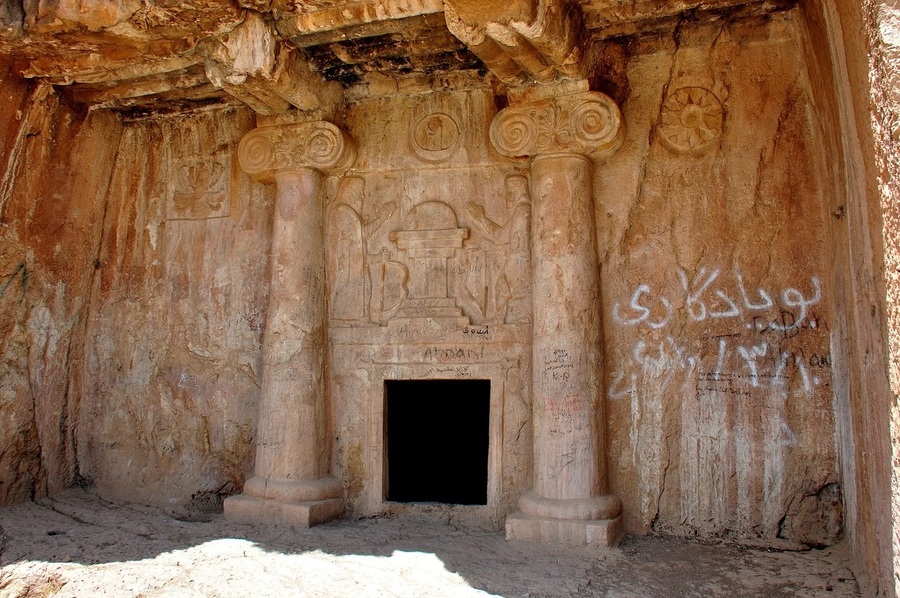Komar Karwan
Location of Qzqapan Cave
Qzqapan Cave is a historical monument of the Medes period, located in the area of Chami Rezan, Dukan city in Sulaimani province, 50 kilometers from the center of Sulaimani.
Although known as a cave, this monument is actually an artificial tomb carved in the rock of a mountain and the entrance has several patterns and paintings of the history of the Median period.
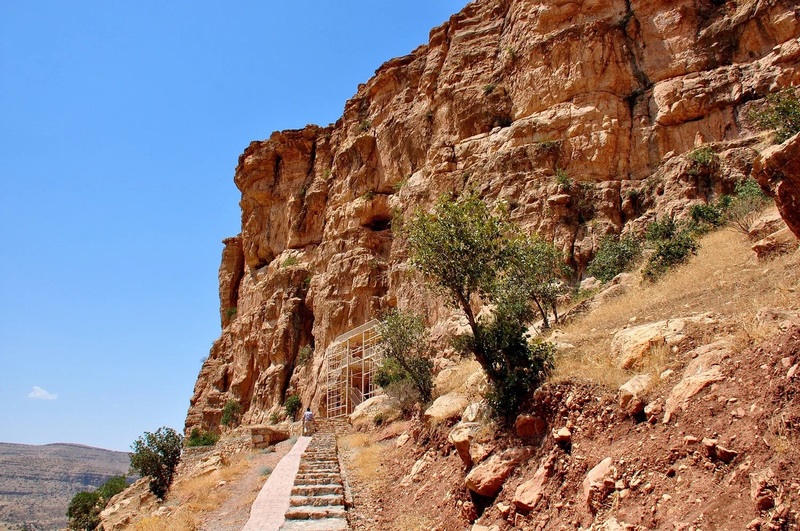
The Medes believed that God first appeared to humans in the form of a face in the center of a mountain, blessed mankind, made rivers flow, provided agriculture and livestock, and then returned to the mountain. That is why the Medes buried their kings in the heart of the mountains so that they could return to God. The Median tombs were always built so that the sun would shine on them at noon and afternoon and the light and heat of the gods would flow over them. They were also built facing a local river or stream. These two characteristics are observed in all the tombs left behind during the Median period.
Earlier, we mentioned Faqraqa Cemetery of Mahabad on the Kurdshop website. Qzqapan cave is similar to Faqraqa cemetery and has many similar historical characteristics.
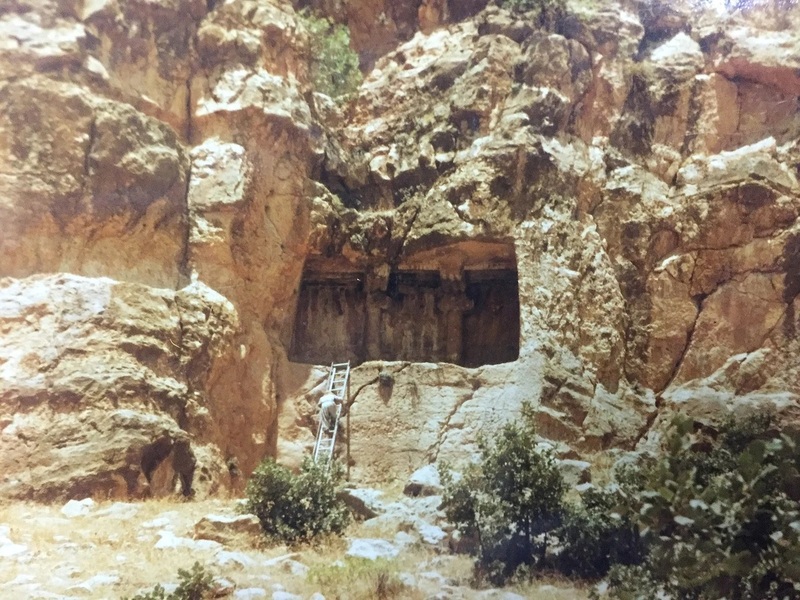
The name of the Qzqapan cave
According to research, the name of this cave or cemetery was changed to Qzqapan during the Ottoman period, which means "kidnapped girl" in Turkish. However, archaeologists believe that this name is incorrect and has nothing to do with this monument. The researchers say the cave was actually called "Dakhmay Qisen Qapan", Qisn means "stone" and "Qapan" means "scale or court". That is why "Dakhmay Qisen Qapan" means "stone grave court".
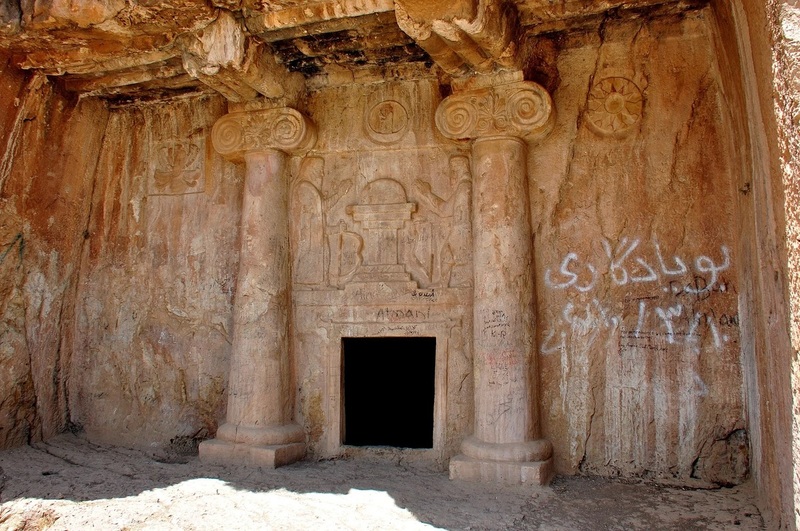
History and Characteristics of Qzqapan Cave
The history of Qzqapan Cave dates back to 550 to 600 BC and belongs to the last years of the Median rule. Because the cave was used as a shrine to kings, like all other Median tombs, it was built in a mountain at an altitude of 10 meters above ground so that people could not easily access it. Like all the cemeteries of the Median period (except the cemetery of Faqraqa), Qzqapan has a courtyard and then an entrance through a small door that consists of three rooms, each with a tomb dug in it.
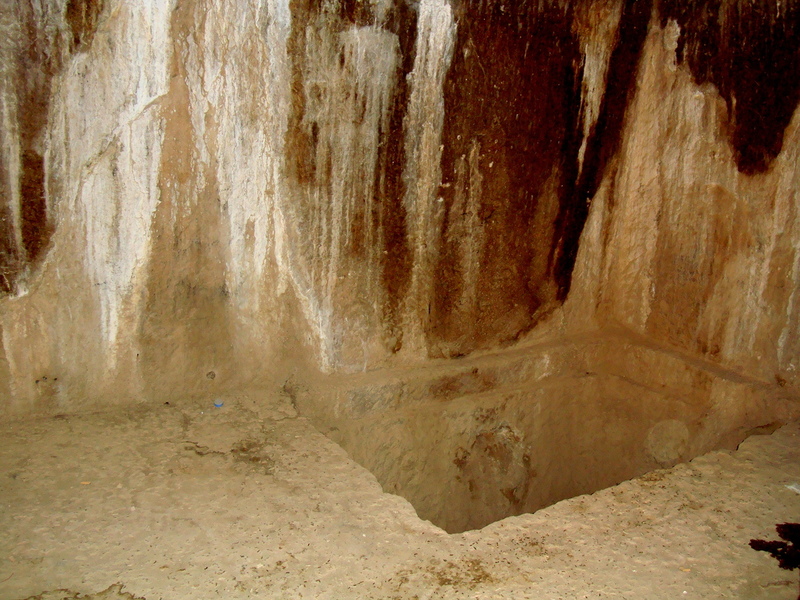
The entrance to the cave is one meter and twenty centimeters high. The three inner rooms are all the same size, measuring 310 cm long, 210 cm wide, and 170 cm high. In each of these three rooms, there is a grave less than a human height, probably because the dead were not buried upright in these graves. The width and depth of the graves are about one meter.
One of these tombs is said to have belonged to Kiaksar (Kay Khasrow), king of Medes, the second to Anita, king of Lydia, and the third tomb is said to have belonged to an unknown and whether anyone was buried there.
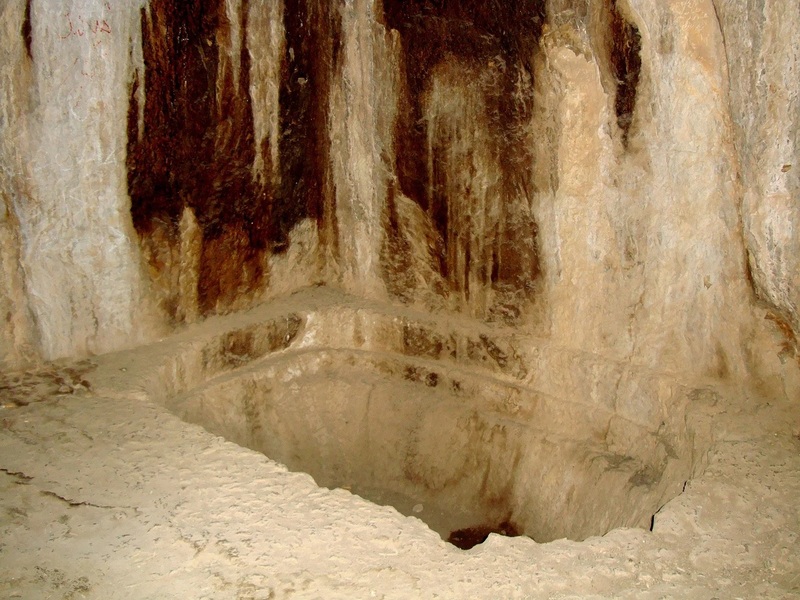
Paint of the outer of Qzqapan Cave and the reconciliation of Kiaksar and Anita
On the outer side of the cave on either side of the small entrance are two pillars carved into the rocks similar to those of other cemeteries of the Median period.
At the entrance, two kings stand facing each other, holding their bows on the ground with their left hands and greeting each other with their right hands in a sign of peace. Between them is a pattern of a platform on which a hemisphere can be seen.
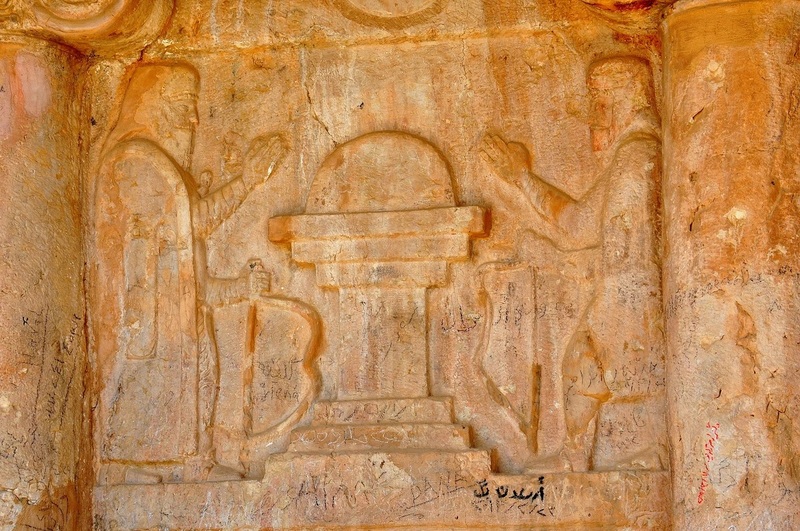
Archaeologists and historians say that the person on the left is Kiaksar, king of Media, and the person on the right is Anita, king of the Lydians. A war broke out between the two governments that lasted seven years. In the seventh year of the war, there was an eclipse that was interpreted by both sides as the wrath of the god of the sun. That is why they decided to end the war and make peace. The scene painted on the door of the Qzqapan cave is a scene of peace and the hemisphere on the chair between them is said to be either a symbol of the sacred fire to illuminate the place or a symbol of the eclipse.
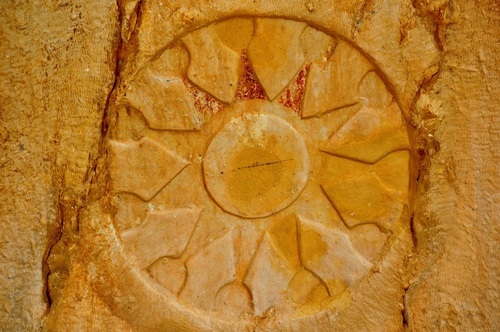
The god of the sun
In the middle and both sides of the pillars, and higher than the carving of the kings, are carved shapes of the three gods of the time who are said to have witnessed that peace. On the right is the god of the sun, the god of the Lydians. In the middle of the two columns is the god of the moon, the Babylonian god, and on the left is Ahura Mazda, the holy god of Zoroastrianism, the Median's god.
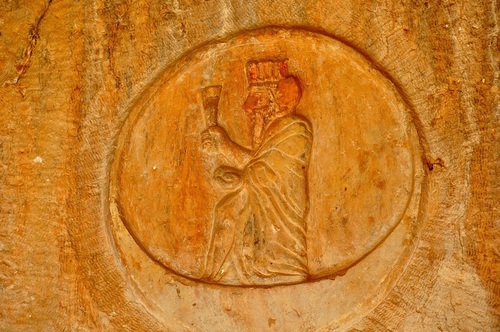
The god of the moon

Ahura Mazda
Zoroastrian Covenant Festival in Qzqapan
Because of the pattern of Ahura Mazda in Qzqapan cave, it is known as a sacred place for Zoroastrian followers and every year on August 21, Zoroastrian followers go to this place and hold a ceremony known as the festival of covenant, the festival of renewing the covenant of love, and coexistence. This focuses on not betraying and fighting for the sake of the land and the country.

